Writing good SEO content briefs is important for any successful content strategy.
An SEO content brief is an important document that
- helps in creating content that connects with the target audience
- and also meets the requirements of search engine algorithms.
Since search engine algorithms are always improving, there is an increasing demand for content that is well-optimized.
As a result, content creators or business owners need to understand the key aspects of an effective SEO brief.
In this article, we will answer the question: “How do you write an SEO content brief?“
We’ll share our top tips, checklists, templates, and examples for crafting SEO content briefs that will help you achieve your goals and drive more organic traffic to your site.
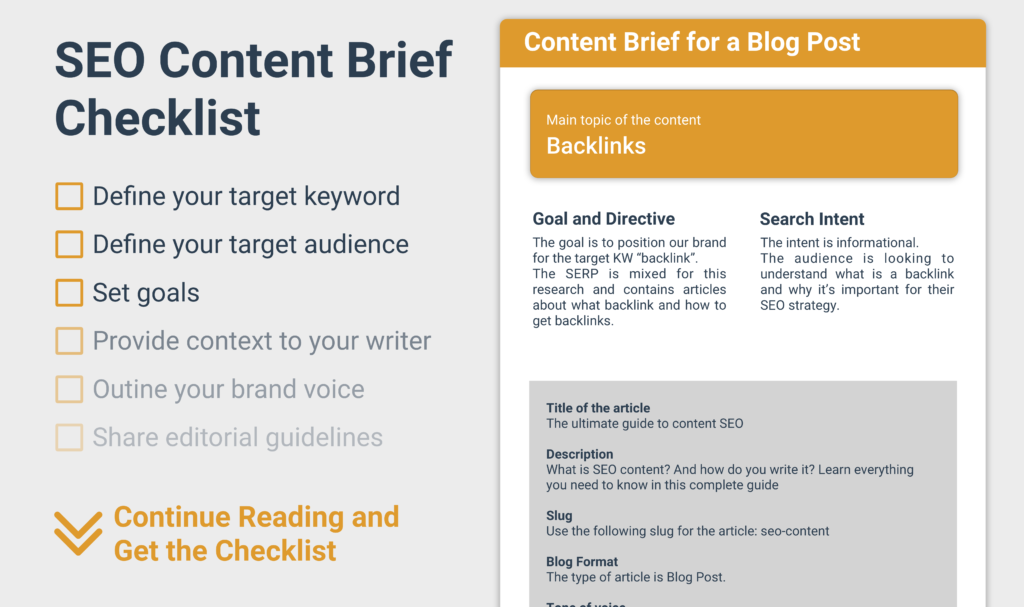
Keep reading to learn how to write better SEO content briefs and take your content strategy to the next level.
Table of Contents
What is a SEO Content Brief?
An SEO content brief provides writers with specific instructions and guidelines to ensure they follow SEO best practices.
While a regular content brief focuses on providing guidelines and instructions for writing, an SEO Content Brief takes it a step further because it ensures that content is tailored to meet the requirements of SEO.
Here are a few benefits of creating SEO content briefs:
- Reducing Production Cost: By providing detailed instructions and guidelines, an SEO content brief ensures that writers understand exactly what is expected of them. This minimizes the need for revisions and rewrites, saving both time and money.
- Improving Consistency: With an SEO content brief, you can ensure that all your content follows a consistent approach and tone. This makes your SEO efforts concentrated, building a strong brand identity and creating a good user experience.
- Enhancing Scalability: As your content production needs grow, having well-structured SEO content briefs in place helps you gain scalability. It allows new team members to be onboarded seamlessly, ensuring they quickly adapt to your brand’s content guidelines. This scalability is essential for growing businesses, allowing them to maintain quality across a growing content environment.
- Optimizing Content: An SEO content brief provides writers with the necessary information and strategies to optimize their content for search engines. This includes target keywords, search intent analysis, and competitor research, among other things. By incorporating these elements, you can increase your chances of ranking higher in search engine results pages.
Considering these benefits, you can take your content to the next level and achieve better SEO results.
So, don’t underestimate the power of an SEO content brief and start implementing it in your content creation process.
What Key Elements an SEO Content Brief Include?
When creating an SEO-focused content brief, it’s important to include two key elements, which are elements that
- provide knowledge and analysis to the writer (target persona, goals, intent, competitor)
- and actionable elements that guide their writing (word count, format, outline).
Here is a detailed explanation of these elements:
Target Keyword
Identify the target keyword(s) that the content should focus on.
The primary keyword is a non-negotiable part of your brief as keywords are the basic building blocks of your SEO structure.
When the primary keyword is included in the content brief, it helps the writer understand the topic better and ensures that the entire piece revolves around the central theme.
For example, if you’re writing a blog post about SEO content writing, your target keyword should be “SEO content writing.”

Target Audience
Define the target audience for the content and provide information about their demographics, interests, and pain points to help your writer tailor the content to resonate with the intended audience.
This will keep your audience engaged and ensure you establish a good connection with them.
For example: Age: 25-35; Occupation: Content Marketers; Interests: SEO Practices.
Goals and Context
Explain the purpose of the content and the specific goals you want to achieve with it.
This could be to
- increase website traffic,
- generate leads,
- or provide valuable information to readers.
In any case, it is always important to have your goals clearly defined and written.
Incorporating this in your content brief is a good start to fulfilling those goals.
Brand Voice and Guidelines
Outline your brand voice and include any specific editorial guidelines or preferences you have for writing style.
Your brand voice must be defined for people to interact with your content and identify your brand.
This will help you avoid a complex situation in which your brand voice is inconsistent across different content that you put out, especially if you work with multiple writers and collaborators to create your content.
Funnel Stage
Determine which stage of the buyer’s journey the content is targeting (e.g., awareness, consideration, decision).
This will help the writer craft the content to meet the needs of the audience at that particular stage.
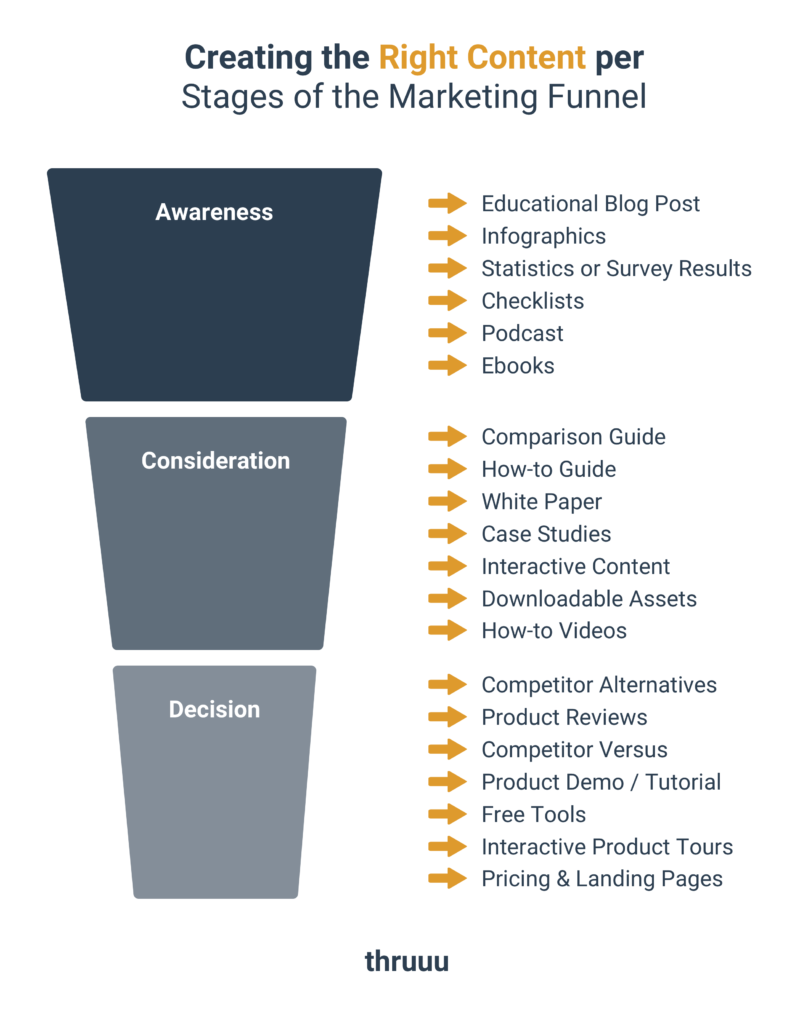
📖 Open in a new tab: Creating the Right Content per Stages of the Marketing Funnel
Search Intent Analysis
Analyze the search intent behind the target keyword and provide insights into what the searcher is looking for.
This will help the writer understand the user’s intent and create content that fulfills their needs.
This increases the likelihood of the content meeting the needs and expectations of the users.
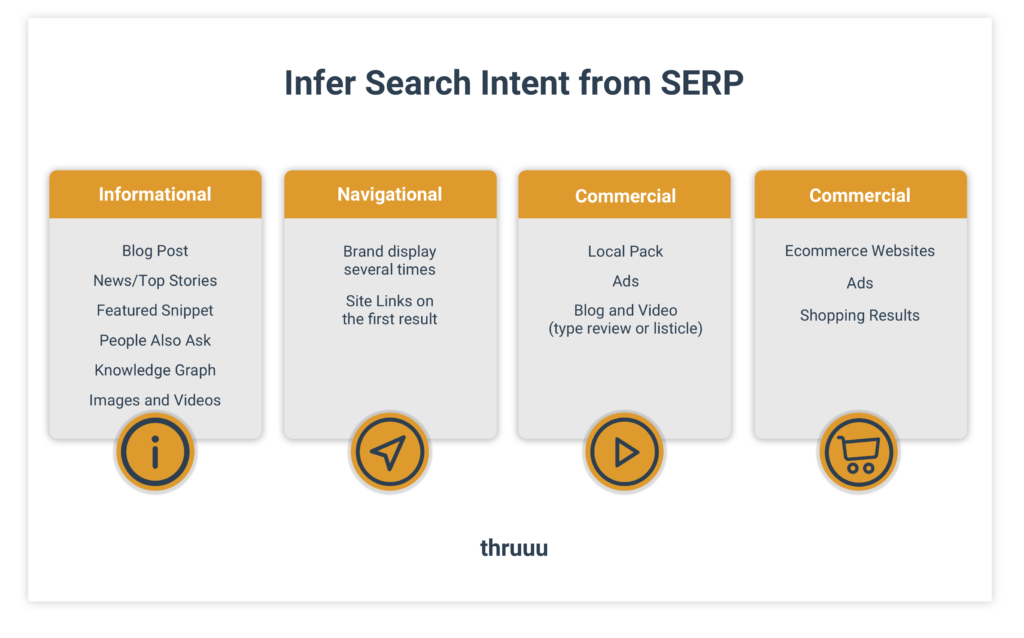
Competition
Research and identify what your competitors are doing well and find opportunities to create unique, valuable content that stands out.
As long as your content fills in gaps that others in your field haven’t addressed, you’ll always be ahead in SEO and get higher rankings in search engines.
So this part needs to be reflected enough in your SEO content brief.
The best way to analyze your competitor is to explore the SERP for your targeted keyword.

Meta Title
If your meta title adequately depicts what your content is about, you will have positive SEO results.
So, when creating your SEO content brief, you need to provide guidance on how to write an attractive and optimized meta title that includes your target keyword.
Description
Explain how to craft a compelling meta description that entices readers to click on the search result.
The meta description plays an essential role in on-page SEO because it provides a brief preview that users see on search engine results pages (SERPs).

URL Slug
Give instructions on how to structure the URL to include the target keyword and make it easy for search engines and users to understand the content.
This will increase the value of your SEO content, improve user experience, and enhance your content’s visibility in search engine rankings.
Format
When you specify the preferred blog post format, you provide writers with a clear guideline for creating content that adheres to SEO best practices while also matching your brand’s tone and the expectations of your target audience.
For example, specify the preferred format for the content, whether it’s a blog post, article, guide, listicle or other format.

👉 It might interest you: Best SEO Blog Post Templates You MUST Make
Content Outline and Headings
Provide a detailed content outline with clear headings and subheadings that outline the main sections and key points to be covered in the content.
This ensures that every section aligns with the overall goals of the SEO content and is helpful for writers who want to create a well-organized piece of content.
Below you can see an example of content outline.
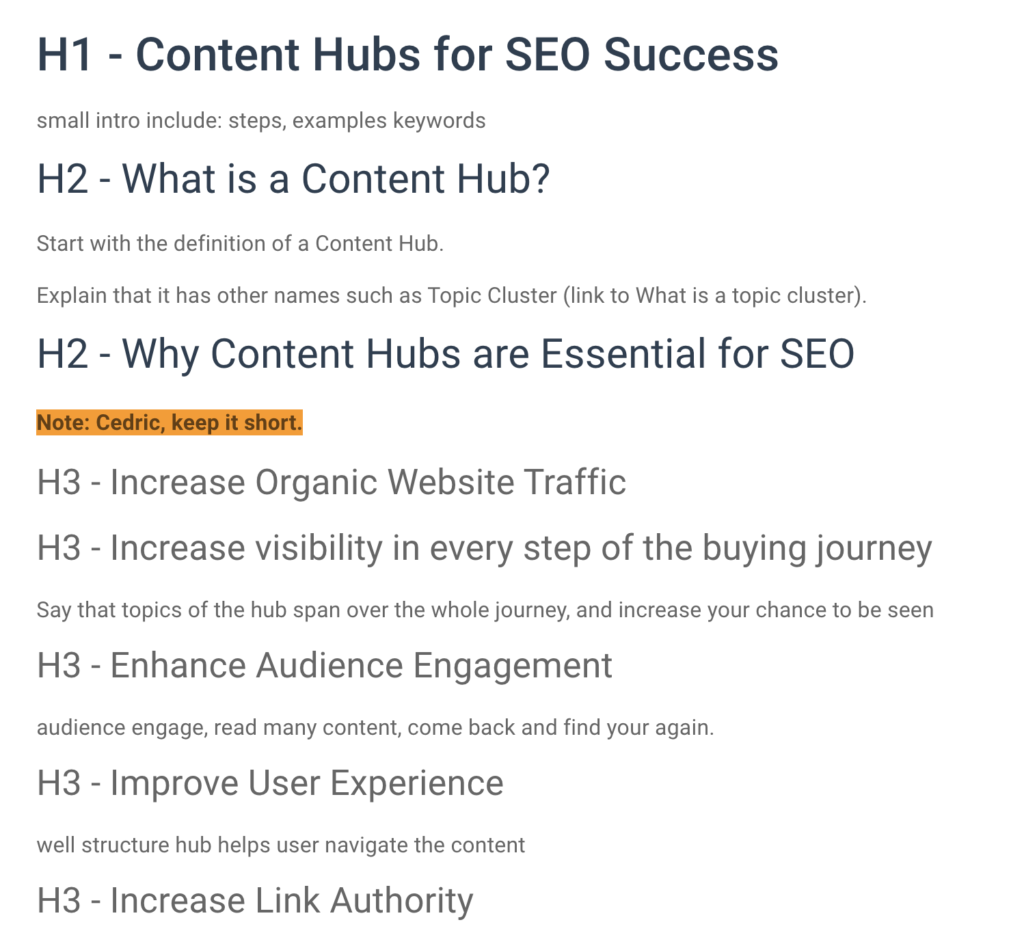
Word Count
Specify the desired word count for the content to ensure it is comprehensive and in line with SEO best practices.
It helps writers know what level of detail and analysis is expected.
For example, if you’re writing a long-form guide, the word count can be around 2,000-3,000 words.
Key Topics and Secondary Keywords
Identify the main topics that should be covered in the content, as well as any relevant secondary keywords that can be included throughout the text.
Writers can use this as a guide to ensure that the piece covers important aspects and includes relevant keywords.
This will help improve your visibility on search engines and engage your readers better.
Questions to Answer
Provide a list of questions that the content should address and answer.
This will help guide the writer in structuring the content and ensuring it provides valuable information to the audience.
Pro Tip: Check the People Also Ask (PAA) for your target keywords and get inspiration
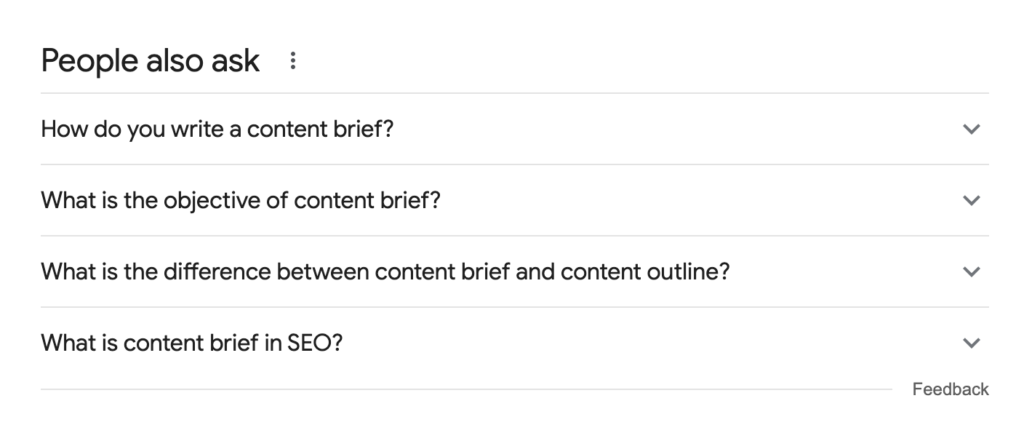
Call to Action
Including a strong call to action in your brief is essential in driving desired actions from readers.
By clearly defining the desired action, whether it’s signing up for a newsletter, requesting a demo, or making a purchase, the content can effectively guide the audience toward the next steps.
The call to action should be persuasive, using compelling language and visual elements to encourage user engagement.
Browse our Free Content Brief Template Library
Our collection of downloadable, free content SEO brief templates will empower you to plan, organize, and produce outstanding content.
Internal and External Links
Internal links help to establish a strong website structure and guide users to related content within the same website.
External links, on the other hand, provide credibility and authority to the content by linking to reputable sources and relevant external websites.
Both links contribute to the overall user experience and SEO performance of the content.
SME Comment and Additional Sources
Adding comments or input from subject matter experts (SMEs) and additional sources is beneficial.
This adds credibility and depth to the content, showcasing expertise and providing valuable insights to the audience.
By incorporating SME comments and referring to trusted sources, the content becomes more authoritative and reliable, enhancing its overall quality and value.
Key Product Features to Highlight
As a tool or marketing solution owner, it’s important to recognize that highlighting a core product feature in your content is a key aspect of SEO for B2B SaaS.
According to Masooma Memon, a content marketer for B2B SaaS companies at inkandcopy.com, when adopting a product-led approach, it’s essential to clearly communicate the specific product feature you want to highlight to your writer.
This ensures that your content effectively showcases the feature, driving engagement and interest from your target audience.
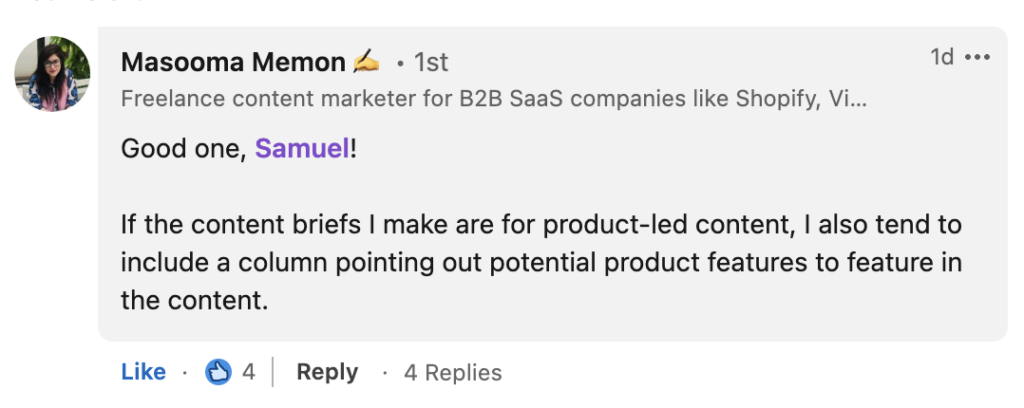
SEO Content Brief Checklist
Now that we have provided you with all the key elements to include in your SEO content briefs, it’s time to take action with our SEO content brief checklist.
This checklist will help you ensure that your content briefs are comprehensive and cover all the important aspects.
So, don’t miss out on this valuable resource!
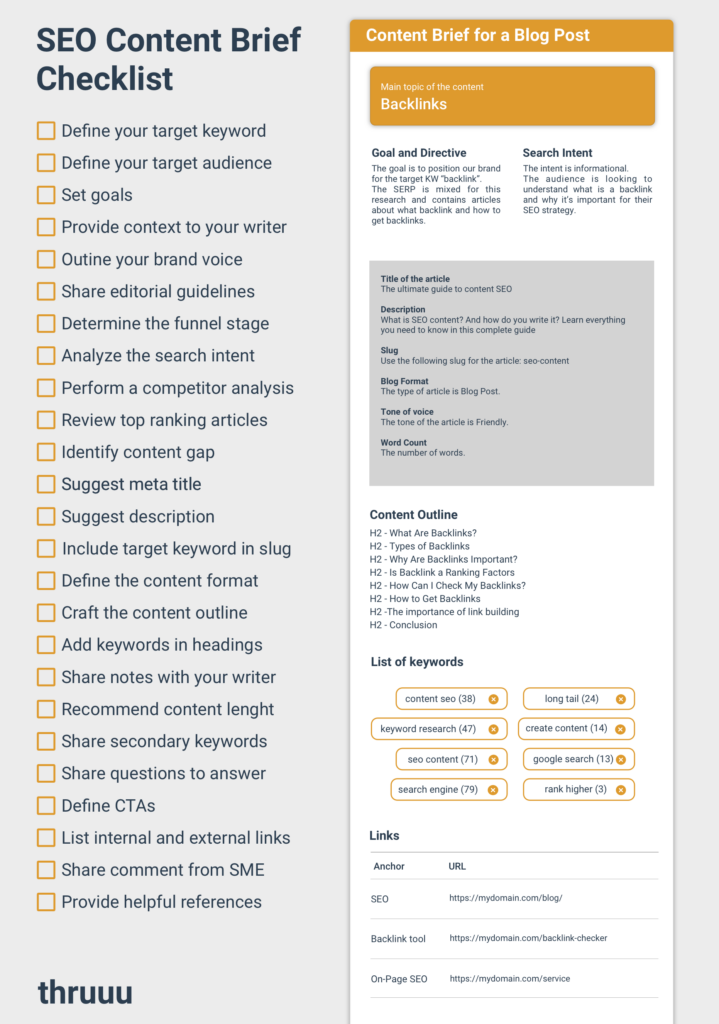
Download the high-resolution version of the checklist and start creating SEO content briefs that will boost your website’s search engine rankings and drive more organic traffic.
Tips from Writers to Create Better SEO Content Briefs
Writing an effective SEO content brief is key to creating high-quality, optimized content.
Here are some tips from writers to help you improve your content briefs:
Incorporating SEO Requirements
Ensure you include specific SEO requirements in your content brief, such as target keywords, search intent analysis, and competitor research.
This will help guide the writer in optimizing the content for search engines.
Providing a Comprehensive Content Outline
Don’t just provide a list of headings and subheadings.
Instead, provide a detailed outline that includes key points and supporting information for each section.
This will give the writer a clear structure to follow and ensure that all relevant information is included.
Don’t Focus on Keyword Density
Many tools may recommend a specific keyword density, but it’s important not to get too caught up in this metric.
Instead, focus on covering the main topic thoroughly and providing valuable information to readers.
Finding a balance between answering the main query and adding new elements to the brief is key.
Providing Helpful References
References, such as comments from subject matter experts (SMEs) or user-generated content, can add valuable insights and perspectives to the content.
Including these references in the brief will help the writer incorporate new angles into the copy and make it more engaging for readers.
By following these tips, you can create SEO content briefs that effectively guide your writers and lead to better search engine rankings.
📖 Interesting Reading: SEO Tips to Find New Angles and Ideas With User-Generated Content
SEO Content Briefs Examples
We’re excited to share with you the exact SEO content brief we utilized for this article.
At the end of this section, you will be able to download the template in Word format.
Our process begins with identifying the main topic of the content, also referred to as the primary keyword.

Following this, we outline the objectives and provide style guidelines, supported by examples from our recent blog posts.
This serves to direct our writers, helping them grasp the desired tone and style.
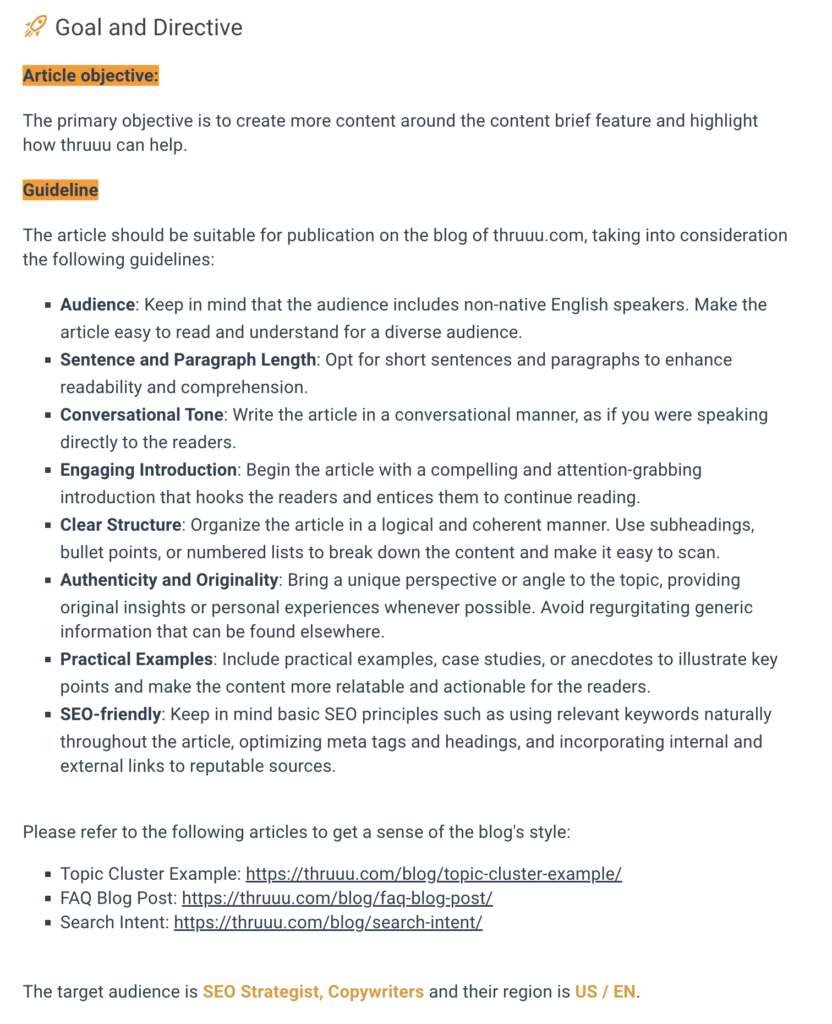
An integral part of our brief is the search intent analysis. In preparing the brief, we analyze the Search Engine Results Pages (SERPs) and convey to our writers the potential actions and intentions of the audience when they search for this topic.
This insight is crucial in shaping the article’s structure.
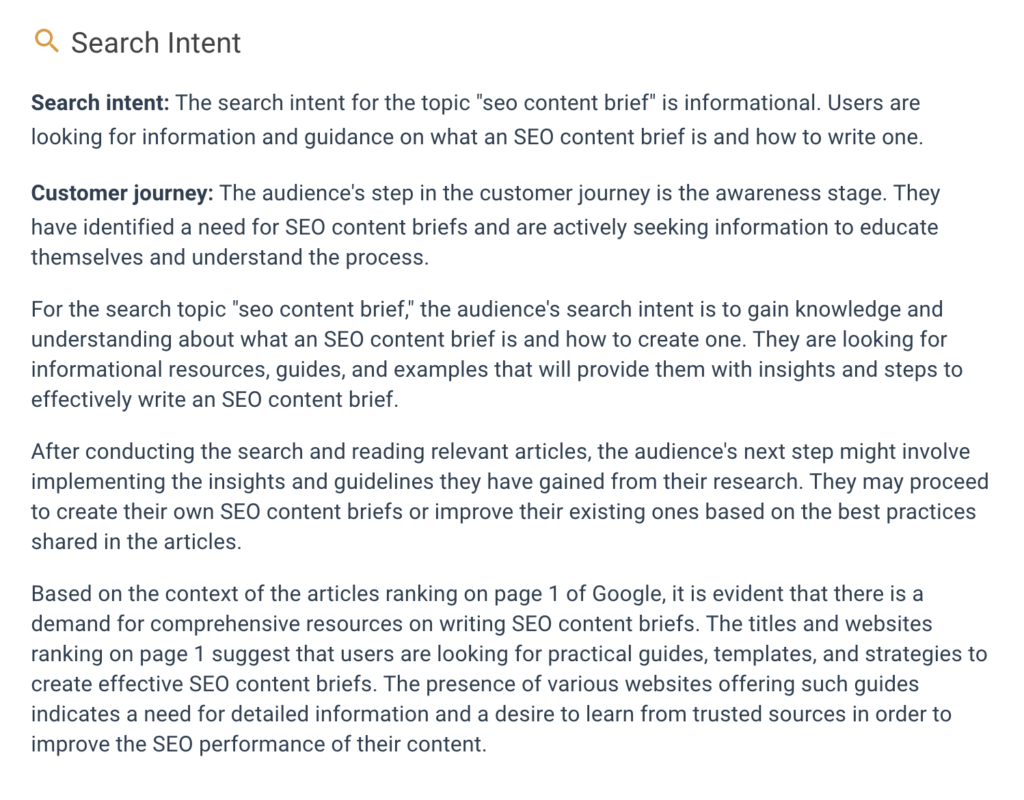
Subsequently, we present the meta information for the article, including its title, description, slug, and word count.
The word count is particularly important as it aids in estimating the content’s final production cost.
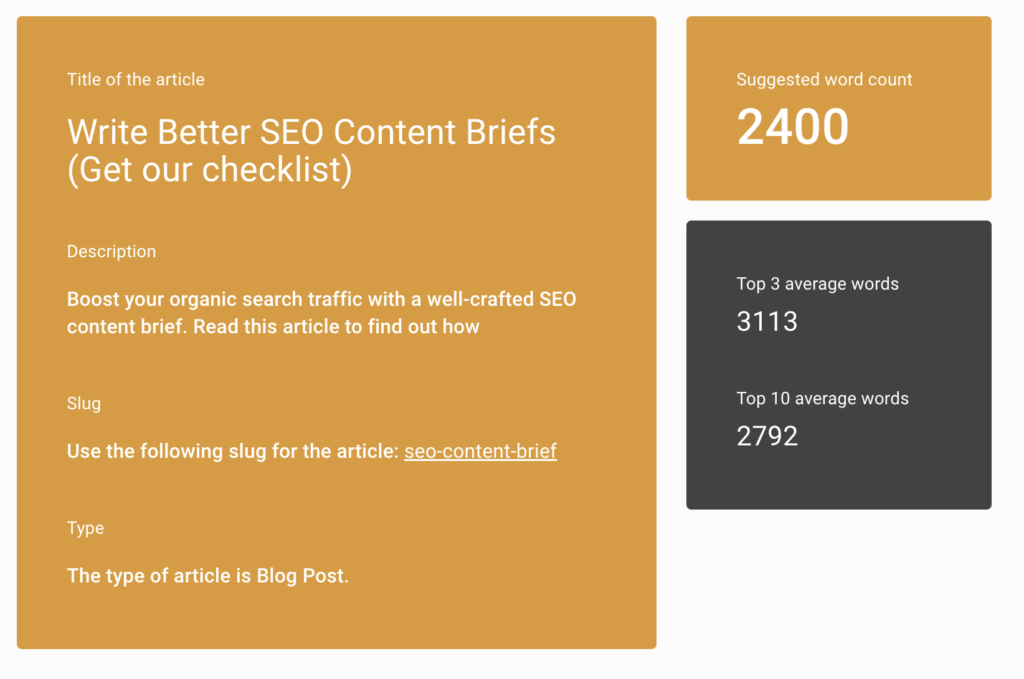
The most critical element of the brief is the content outline.
Here, we enumerate all the headings, encompassing both primary and secondary keywords, and include key notes and directives to the writer.
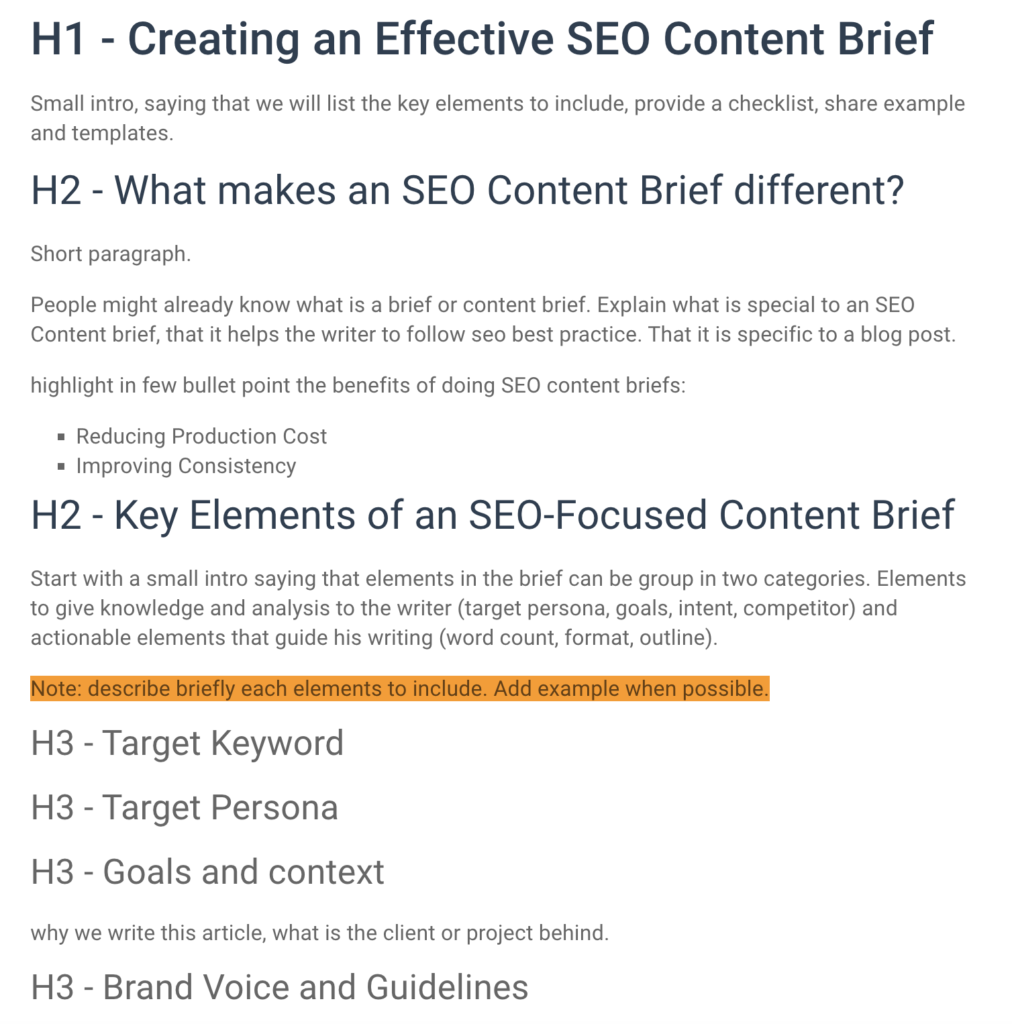
Further, we delve into the main topics and top questions that should be addressed in the content.
This additional information assists our writers in structuring their work and aligning it with these key elements.

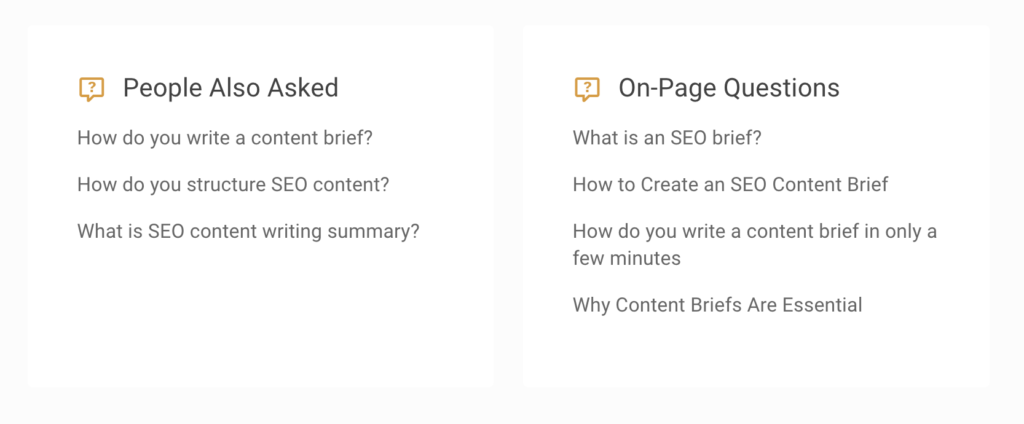
Towards the end, we incorporate a SERP and competitor analysis, allowing the writer to review the main articles that currently rank on Google.
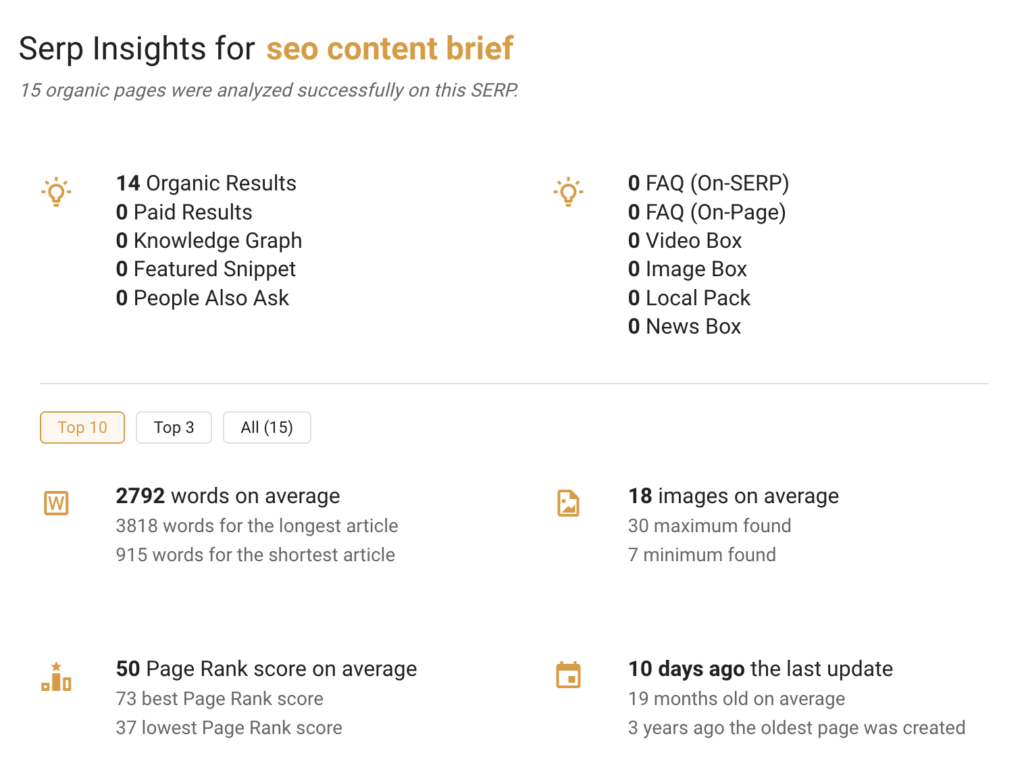
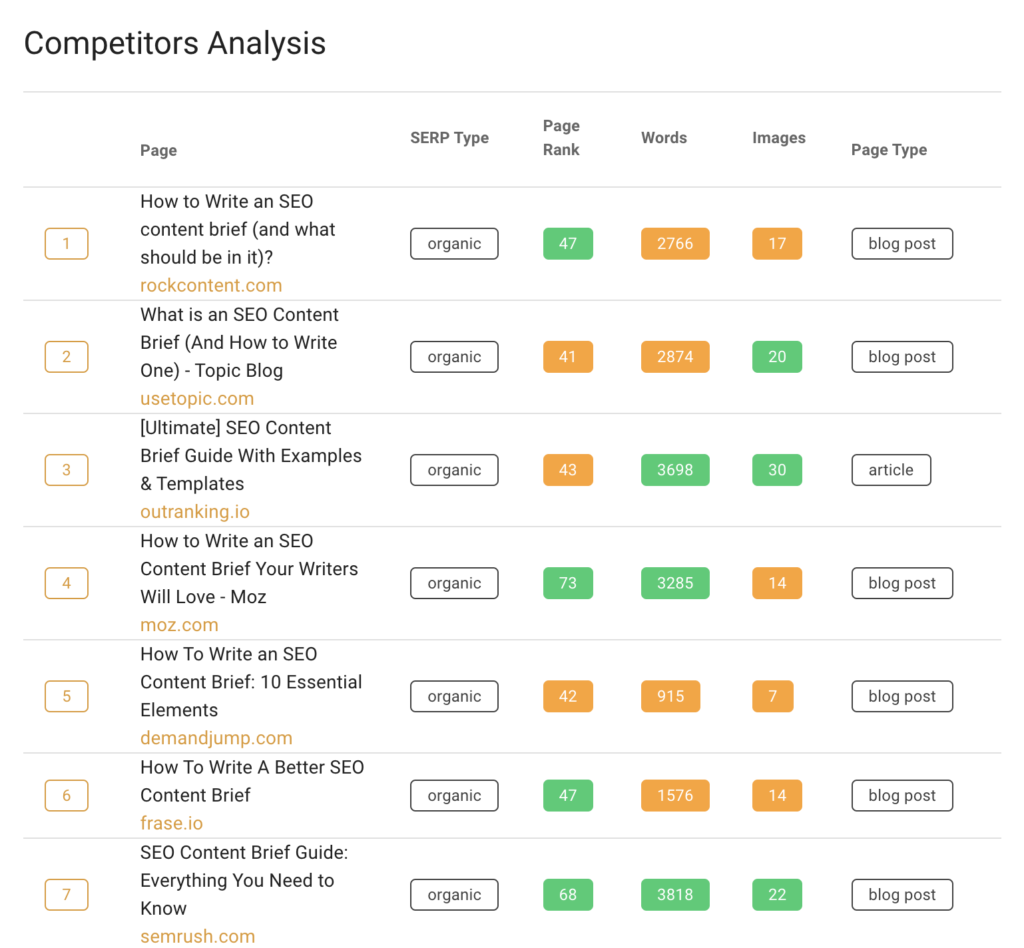
Last but certainly not least, we suggest some reading materials that could provide the writer with valuable insights and aid in completing the copy.
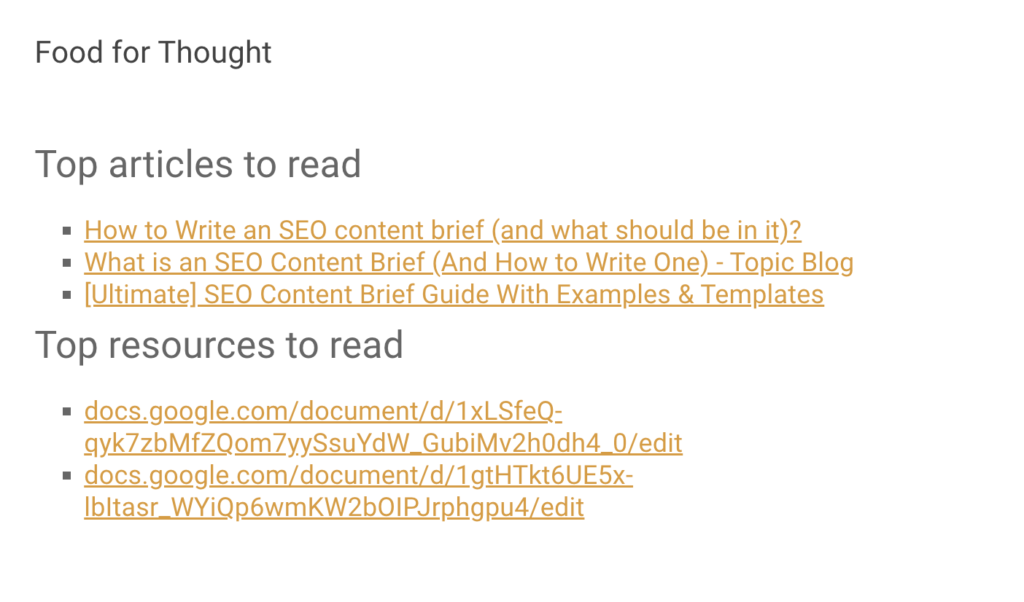
For those interested, the public version of this brief is accessible here.
Additionally, the template for this SEO Content Brief is available for download. Get the template.
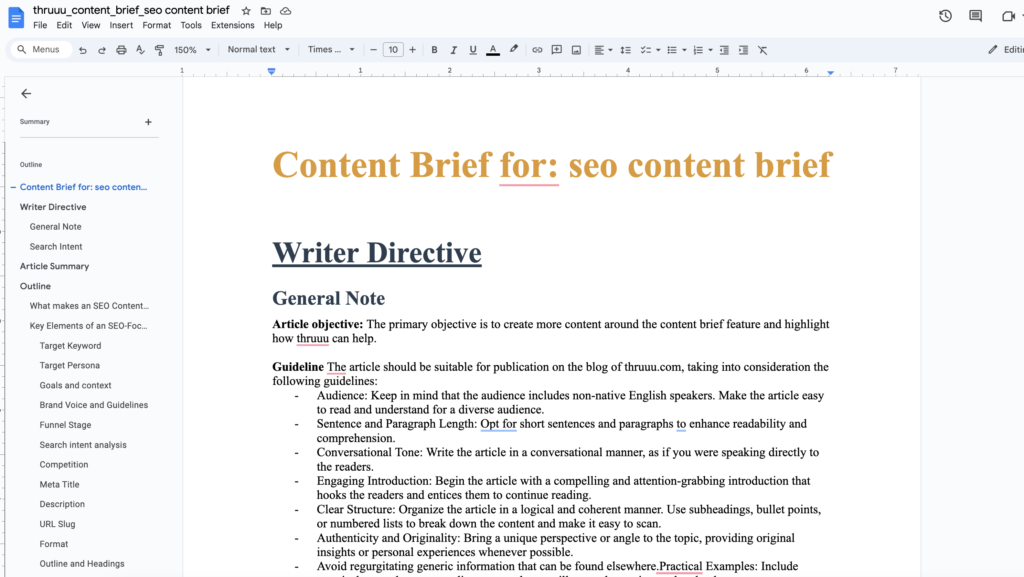
What Tools to Accelerate Your SEO Content Brief Creation?
When creating content briefs, there are several tools available that can help streamline the process and improve efficiency.
Some popular tools for creating content briefs include Market Muse, Frase, and Content Harmony.
These tools offer features like content outline creation, competitor analysis, and content optimization recommendations, all of which can greatly enhance your content brief creation process.
However, one standout tool is thruuu content brief generator.
By using thruuu content brief generator, you can effortlessly create an effective SEO brief in under 10 minutes.
This minimizes your research time by 90% and gives you an easy-to-use interface for collecting data from the SERP.
Here is how thruuu content brief generator can help you in creating content briefs:
Competitor Analysis
Gain a competitive edge by delving into competitor content.
thruuu helps you gain key insights from your competitors, like frequently asked questions and key topics for your content.
This allows for informed decisions when shaping your own content brief.
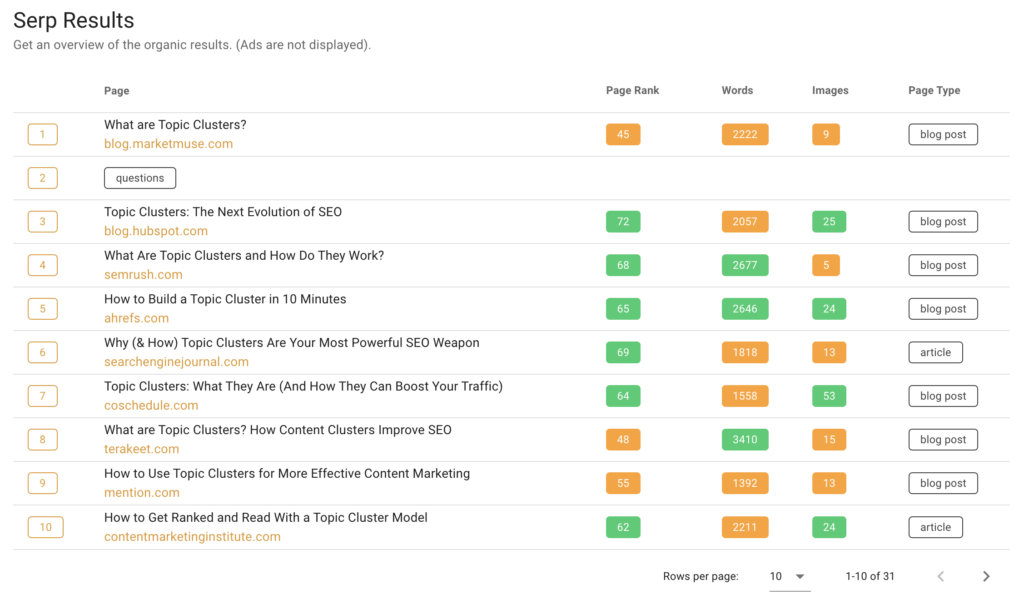
AI-powered Content Outlining
Creating a content outline with an AI-powered content generator helps you structure your content to maximize its visibility in search results.
You can start from scratch with an outline powered by AI, or you can look at the structures of your competitors to get ideas.
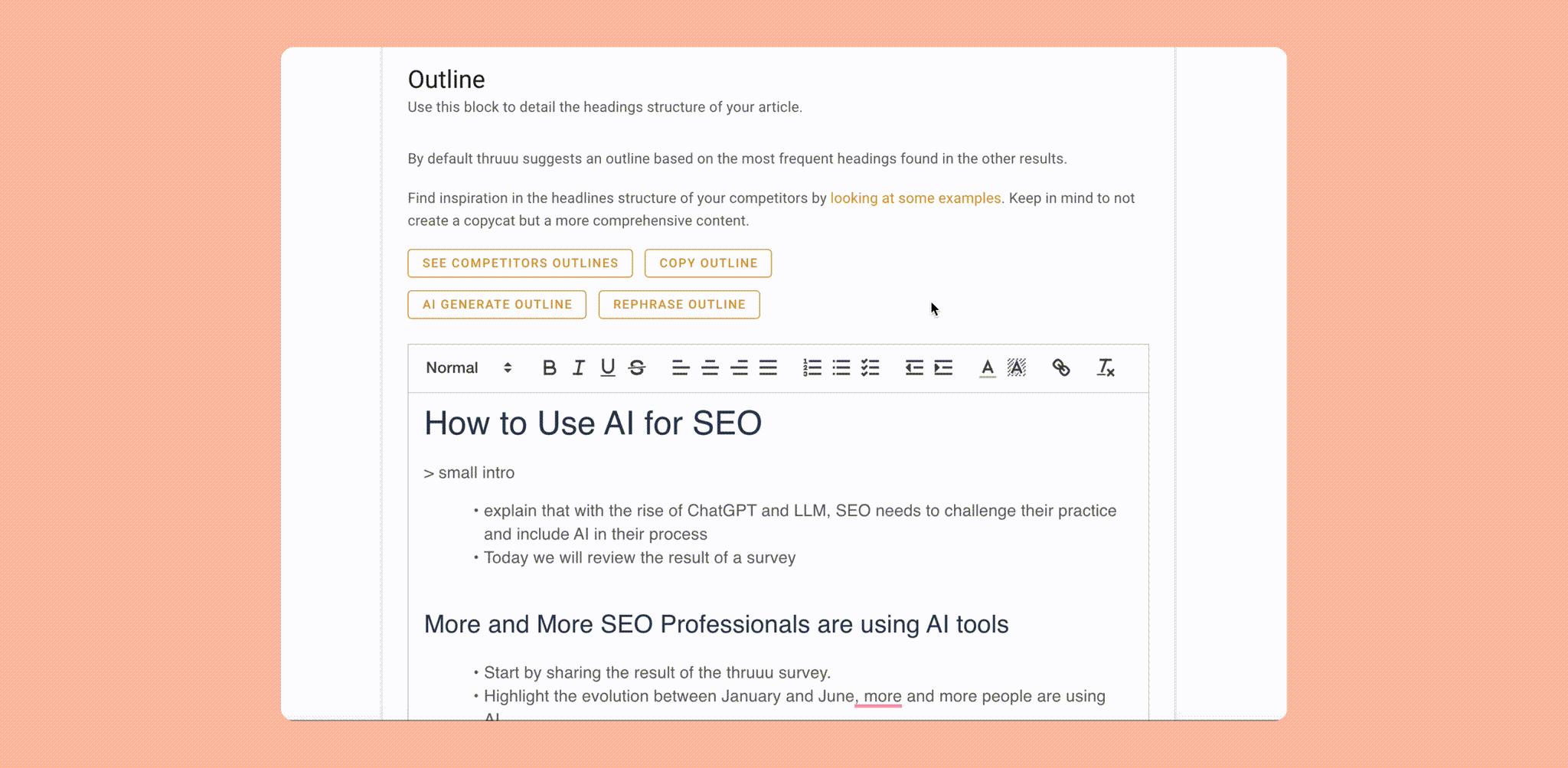
Customized template for projects
thruuu has a large library of more than 15 customizable elements, making it easy to make templates that are perfect for a wide range of client projects.
Optimized title and description
thruuu analyzes the highest-ranking pages and provides suggestions for titles and descriptions that are perfectly aligned with the search intent.
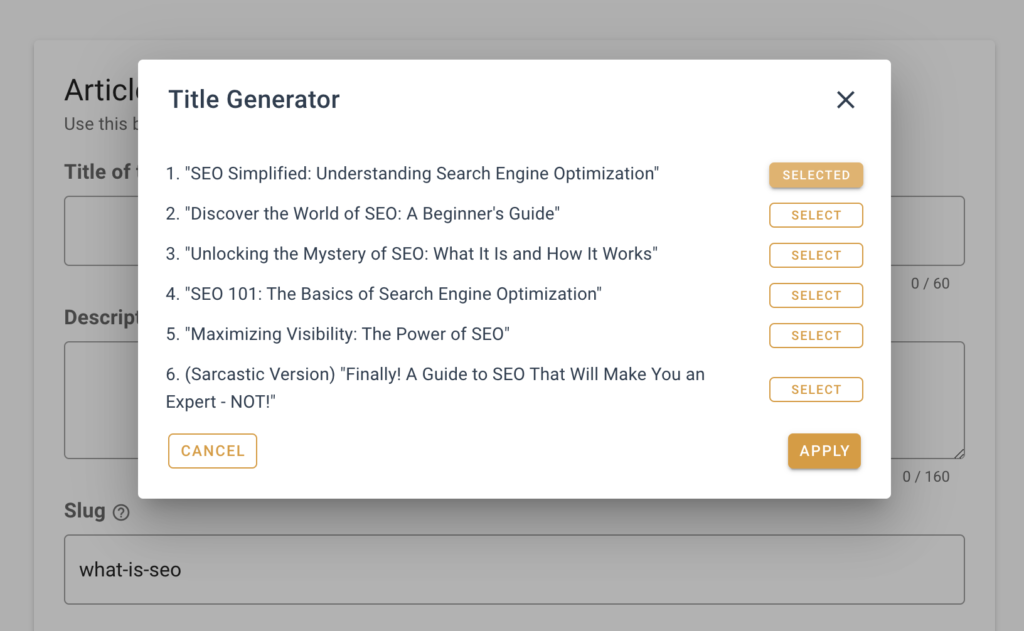
User-Friendly Interface
The user-friendly interface of thruuu is accessible to both seasoned content creators and those new to SEO.
The user-friendly design makes it easy to extract actionable insights for content brief creation.
Write Better Content Briefs
With the thruuu Content Brief Generator, reduce your research time by 90% and compile data from the SERP in a user-friendly interface
